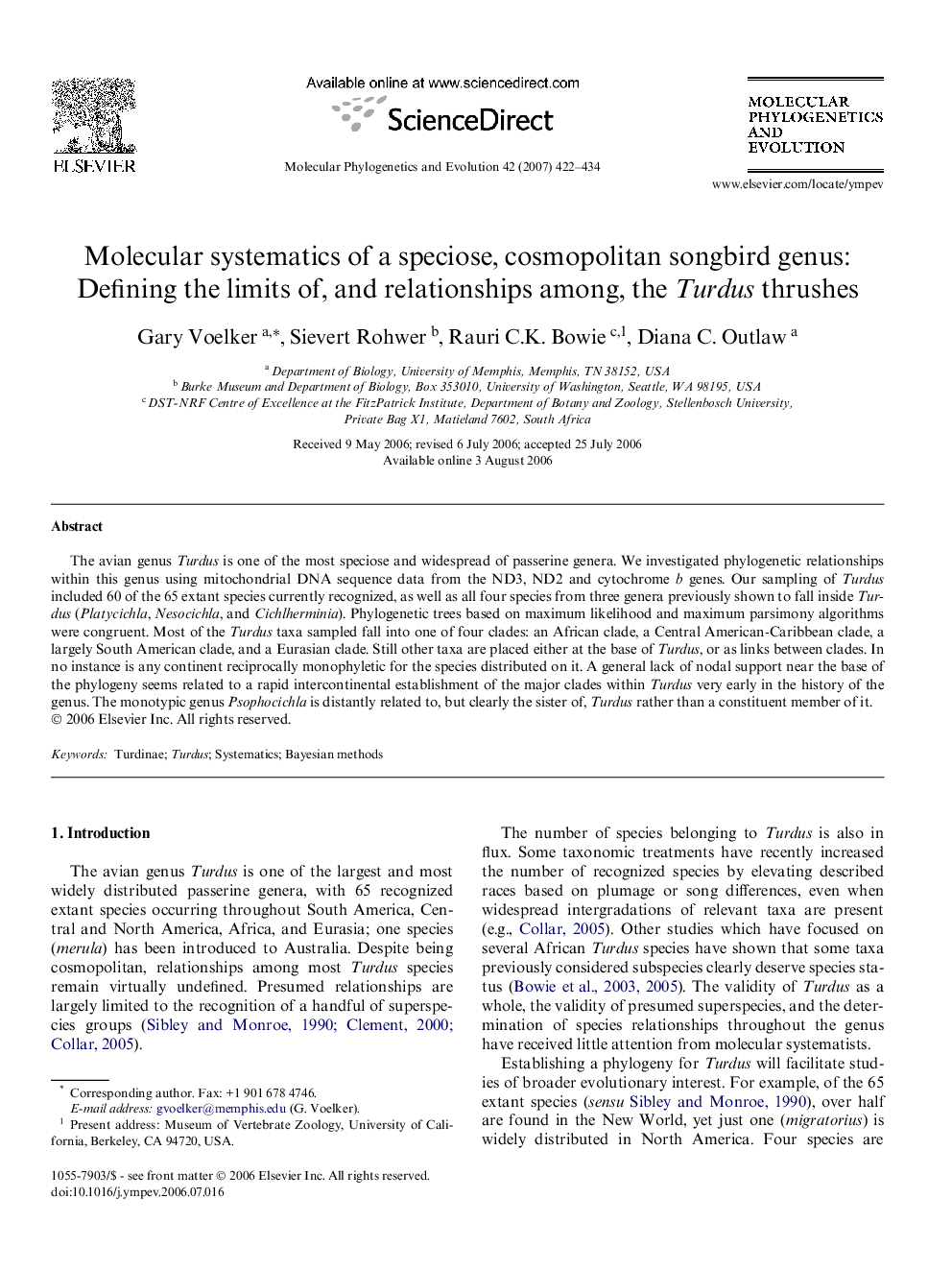| Article ID | Journal | Published Year | Pages | File Type |
|---|---|---|---|---|
| 2835526 | Molecular Phylogenetics and Evolution | 2007 | 13 Pages |
The avian genus Turdus is one of the most speciose and widespread of passerine genera. We investigated phylogenetic relationships within this genus using mitochondrial DNA sequence data from the ND3, ND2 and cytochrome b genes. Our sampling of Turdus included 60 of the 65 extant species currently recognized, as well as all four species from three genera previously shown to fall inside Turdus (Platycichla, Nesocichla, and Cichlherminia). Phylogenetic trees based on maximum likelihood and maximum parsimony algorithms were congruent. Most of the Turdus taxa sampled fall into one of four clades: an African clade, a Central American-Caribbean clade, a largely South American clade, and a Eurasian clade. Still other taxa are placed either at the base of Turdus, or as links between clades. In no instance is any continent reciprocally monophyletic for the species distributed on it. A general lack of nodal support near the base of the phylogeny seems related to a rapid intercontinental establishment of the major clades within Turdus very early in the history of the genus. The monotypic genus Psophocichla is distantly related to, but clearly the sister of, Turdus rather than a constituent member of it.
